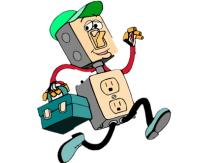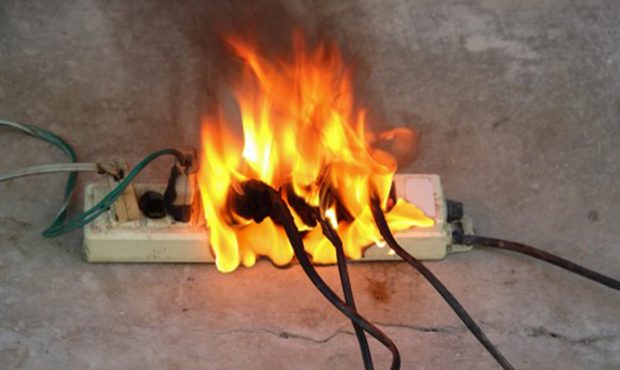common types to CONSIDERED AN ELECTRICAL EMERGENCY!

Electrical appliances are staples of modern convenience. Where would we be without electric ovens to prepare our food, washers and dryers to handle our clothes and lights to illuminate our way in the dark? Electricity is an absolute must in the modern world, but with it comes numerous risks and potential hazards. Anything from a frayed cord to an overloaded circuit can cause a short or a spark, resulting in an electrical emergency.
Common types of electrical emergencies include:
- A wire that is failing to trip. Under normal circumstances, the circuit breaker will trip and shut itself off automatically if it senses something wrong. This means, when the circuit heats up from overloading, or the black wire comes into contact with another wire (known as a “hard short”), the circuit breaker mechanism will shut off power to the circuit. However, if the circuit breaker mechanism is not working, the wire will fail to trip properly, leaving your home in danger of electrical failure and other hazards. If you notice a humming or buzzing sound coming from your electrical breaker box, this could be a sign that the system is failing to trip
- An overloaded outlet. If you put too much pressure on a single outlet, it may heat up and begin to burn. This could leave a black or brown mark around the outlet. If you notice a burnt outlet, it is important to call a professional electrician and to avoid touching the outlet, as it could be very hot.
- A continuous problem. As a rule, if you are having a problem with a specific appliance or light for longer than one hour, it is a good idea to seek professional assistance. Electrical malfunctions could put you at risk for serious injuries, and you need to take steps you protect your family and keep your home’s electrical systems running smoothly. You also need to call an electrician if you notice any burnt or acrid smells, as it could be a sign of damaged wires.
- A power outage. While some power outages may be scheduled by the utility company or occur due to a storm or a problem with a transformer, other power issues could be isolated to your home. If you are without power, it is important to call the electrical utility company and see if they have an answer on their end. If they don’t know what is going on, it is important to call our professional electricians immediately to protect your home. Some electrical malfunctions could lead to electric shock hazards. It is important to inspect and repair your home’s electrical system regularly to stay safe.
- Electrical fire. Sometimes a short in a circuit causes it, other times it’s a frayed cord placed near some curtains. No matter how they end up happening, electrical fires can be dangerous to deal with. Establishing emergency response procedures for electrical fires in your home is essential to maintaining the health and safety of your entire family.

Emergency response procedures for an electrical fire include:
- Cut the Power: The first thing you should do in any electrical fire is cut the power to the electrical system causing the problem. You can do this by flipping the switch on your home’s breaker box. Simply unplugging the appliance or flipping the switch still poses a risk, especially if the cause is a frayed wire or overheated appliance. If the fire has not yet fully started, this should be enough to stop the fire before it starts. This step is also important because it reduces the risk for electric shock for anyone handling the fire and allows you to use more resources while trying to stop the flame.
- Use a Fire Extinguisher: If you have one in your home, everyone should know how to put out an electrical fire with a fire extinguisher. If you were unable to cut the power to the source of the fire, you should only use a Class C-rated fire extinguisher. These use carbon dioxide or dry chemical extinguishers. If the power was cut, you should use a Class A extinguisher, which is water-based. Pull the pin depressing the handle and point the horn at the base of the fire before holding down the handle. Continue dispersing the chemical until the fire is fully extinguished. If you are not sure of your fire-extinguisher’s class, have it checked — Class A and Class C extinguishers are not interchangeable and should only be used in the described circumstances.
- Smother the Fire: If you do not have a fire extinguisher on hand, you should know how to put out an electrical fire without a fire extinguisher. If the power to the area is off, you can use either a fire blanket or water to extinguish the fire. However, if you cannot turn off the power or if you are not sure whether the power is off, do not use water and do not approach the fire, or else you risk electric shock.
- Practice Fire Safety: If you cannot control the fire, exit the building as quickly and calmly as possible before calling authorities. Remember to keep close to the ground to avoid smoke inhalation and stop, drop and roll if your clothing catches on fire.
- Call 911 and Exit: Always call 911 in the event of a fire, even if the fire is out. Smoldering objects are still able to reignite, especially if you were unable to cut power to the source of the fire.
FOR MORE INFO CALL US TODAY!
Best regards Ivolt llc Electrician services.
